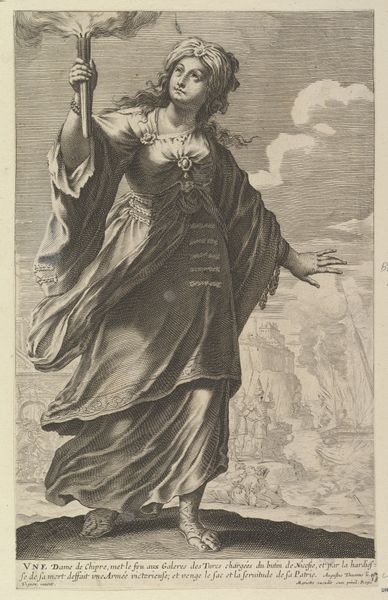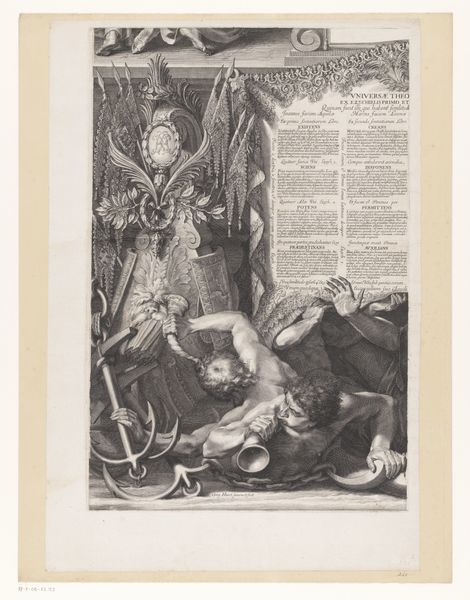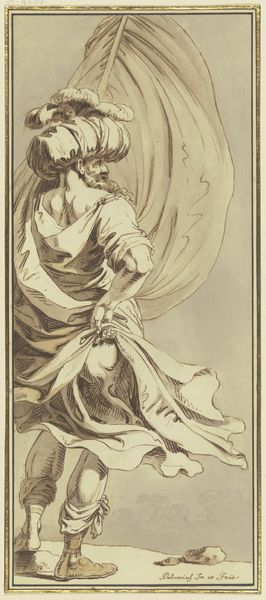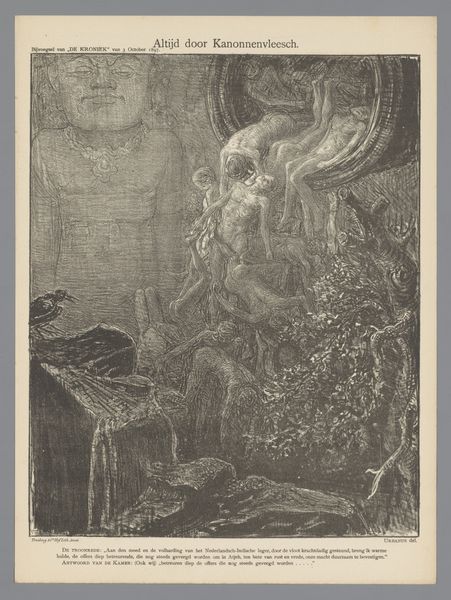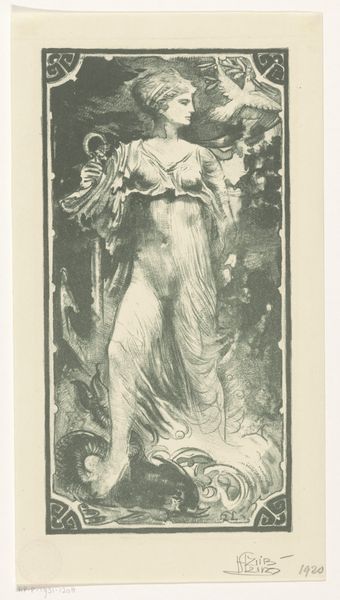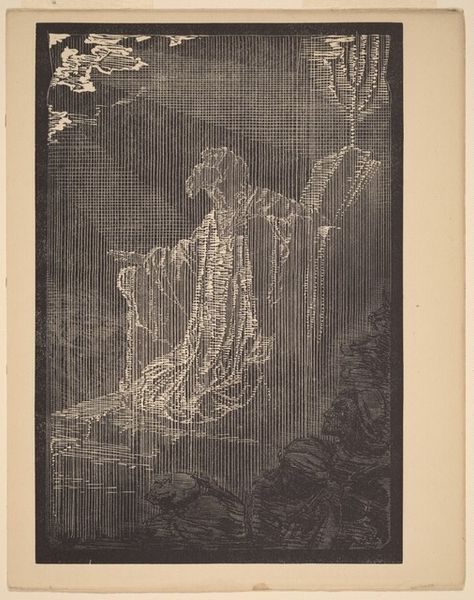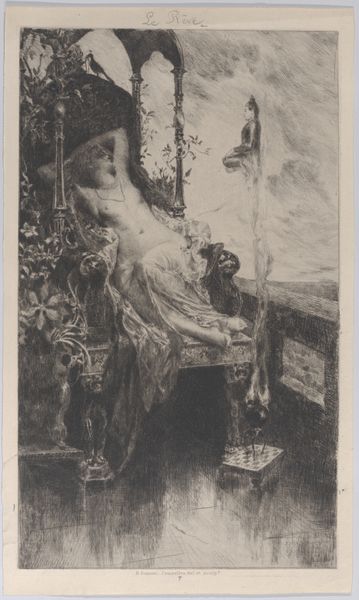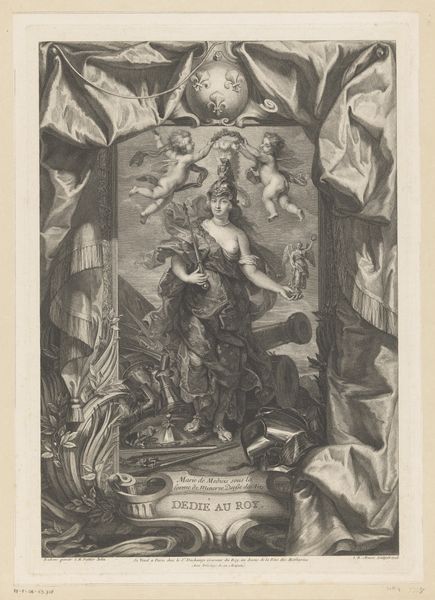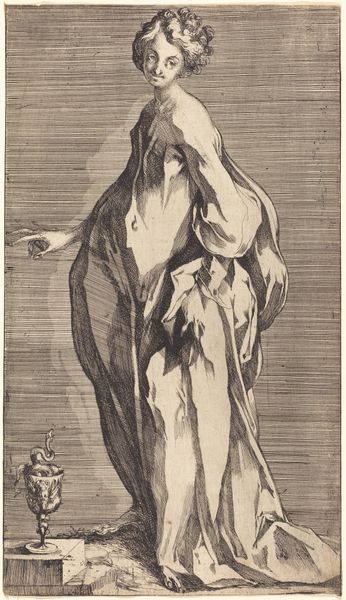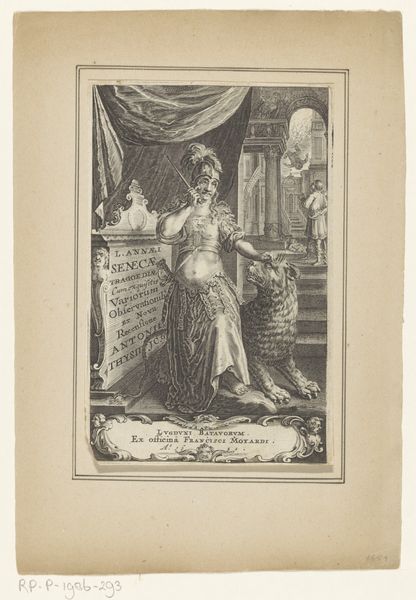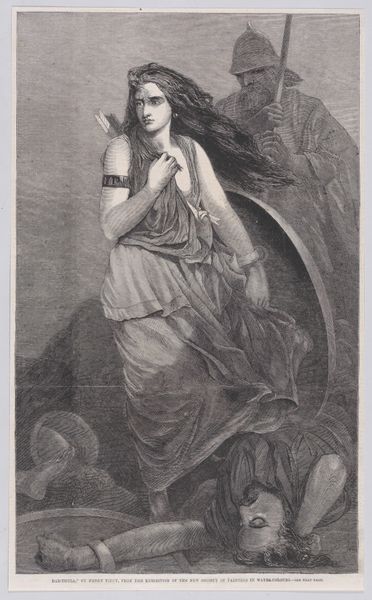
Frame for a Dedication Plate 1715 - 1786
0:00
0:00
drawing, print, etching, pencil, engraving
#
drawing
#
allegory
#
baroque
# print
#
etching
#
figuration
#
pencil drawing
#
pencil
#
line
#
history-painting
#
academic-art
#
decorative-art
#
engraving
#
rococo
Dimensions: Sheet: 20 1/4 x 14 5/16 in. (51.4 x 36.4 cm) trimmed within platemark
Copyright: Public Domain
Editor: This is Claude Augustin Duflos le Jeune’s "Frame for a Dedication Plate," dating from somewhere between 1715 and 1786. It's a print, an etching and engraving on paper, currently held at the Metropolitan Museum of Art. It strikes me as a powerful, almost propagandistic image, even though it's “just” a frame. What do you see in it? Curator: I see a powerful statement about the relationship between power, knowledge, and representation. This frame, meant to glorify some historical figure or event, is itself an exercise in constructing that glory. The cherubs, the armillary sphere, the flags, the column: what do these symbols evoke for you? Editor: Well, the cherubs suggest innocence and divine favor. The armillary sphere… knowledge and exploration? Flags and columns suggest established authority. It feels like a very deliberate attempt to build legitimacy. Curator: Exactly. And within what social, cultural, and political structures was such authority built and maintained? What stories are being amplified here, and whose stories are being suppressed in favor of a singular narrative? Think about the Baroque and Rococo styles, the decorative-art aspects; those elaborate details weren't just aesthetic choices. Editor: They were a means of conveying wealth and power. This wasn't just about commemorating someone; it was about solidifying their place within a particular hierarchy, which, thinking about the dates, I suppose was aristocracy? Curator: Precisely! How does understanding that historical context change your interpretation of the artwork? Editor: It makes me see it as less celebratory and more…critical. Almost like an advertisement for power, not necessarily a reflection of inherent worth. Curator: It also becomes a tool for critically analyzing systems of power, isn’t it? The artwork almost asks, "Who benefits from this image?" Editor: Absolutely. Looking at it this way, I can never see a frame as *just* a frame ever again!
Comments
No comments
Be the first to comment and join the conversation on the ultimate creative platform.


